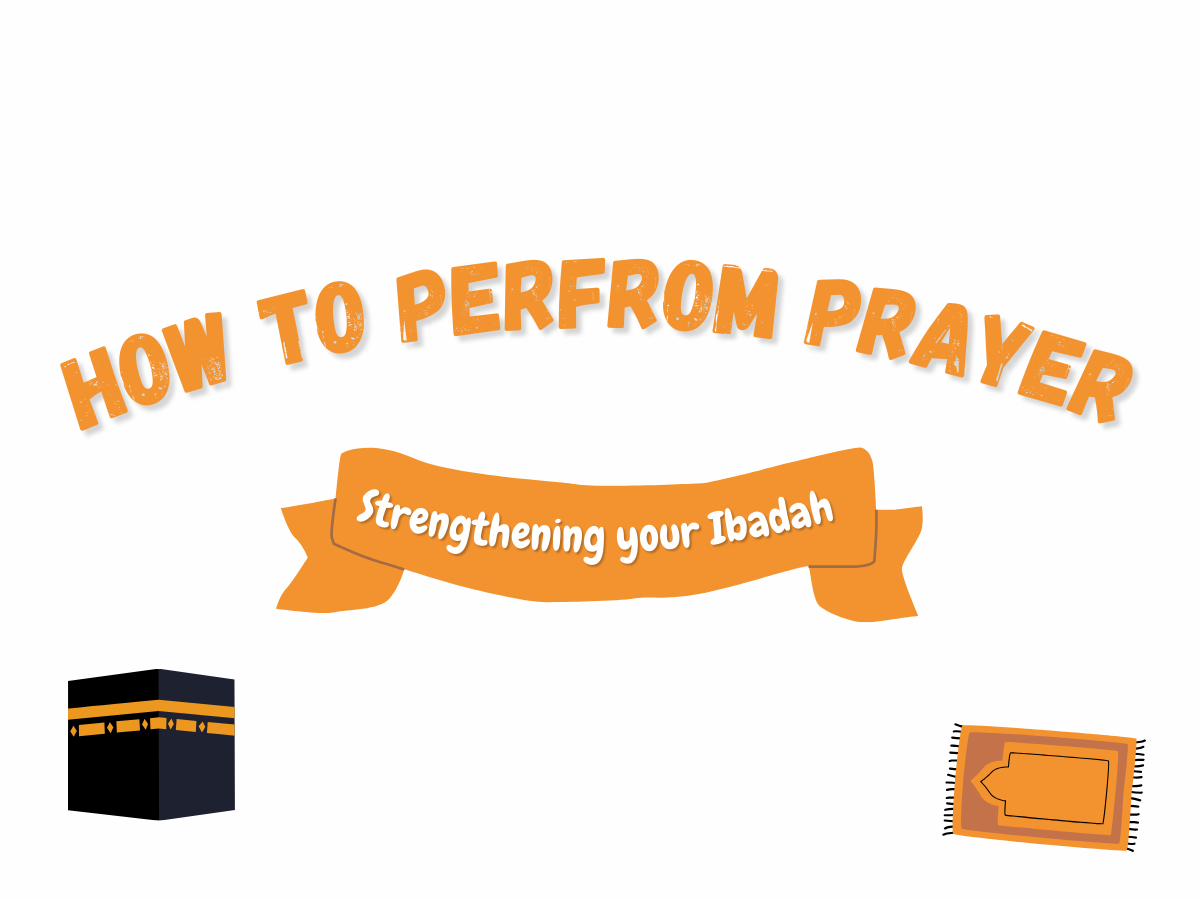
05 Jan How to Perform Prayer (Salah)
We as Muslims pray as a fundamental aspect of our faith, demonstrating submission and devotion to Allah. It serves as a direct means of establishing a spiritual connection with Allah, seeking guidance, forgiveness, and blessings. It also encourages gratitude and remembering Allah’s presence. Prayer installs discipline and focus, bringing mindfulness and spiritual awareness into our daily routines. Congregational prayer, particularly on Fridays for Jumu’ah prayer, fosters a sense of community and unity among Muslims. Overall, prayer in Islam is a foundation for spiritual growth, gratitude, and community.
The second of Islam’s five pillars is Salah. After puberty, when a person reaches legal adulthood, all Muslims are required to pray five times a day. The act of prostration is the time we are closest to Allah and provides us with a chance to remember Him, express our thanks to Him, and speak with Him. Our Salah is a gift from Allah, and on the Day of Judgement, it is the first item for which we are held accountable.

This quick tutorial has been put together to make it simple for newcomers to understand how it’s done or for those looking to brush up on their understanding.
There are five designated periods for Salah during the day and night. Using an app or website, you may quickly get the accurate Salah timings for your area.
Make sure you have made wudu and are dressed in a way that at least covers your awrah when it’s time for Salah. Men should cover their whole body, including their navel and knees, with an awrah. A woman’s body must be covered everywhere save her hands, feet, and face. Look for a spotless area where you won’t bother other people, such as on a prayer mat.
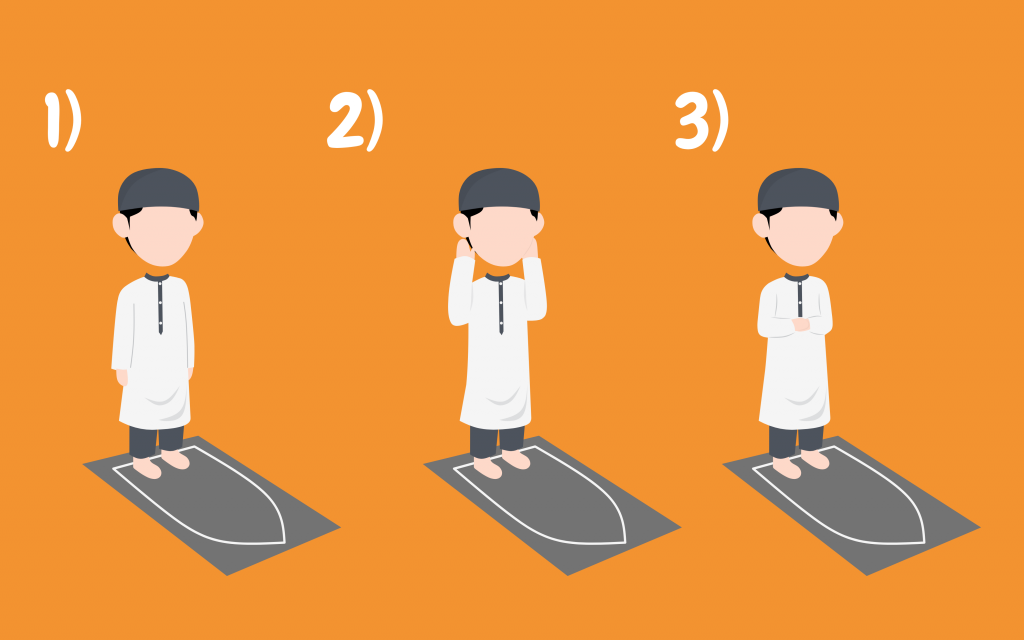
Face southeast in the UK while facing the Qiblah, the direction towards the Ka’bah in Makkah. There are several free applications that are are available that use your phone’s compass to determine the location of the Qiblah. You can pray while seated if you are sick or disabled and cannot stand.
Regarding ‘Intention’, a person should know in their heart (at least) what prayer they are intending to pray. It is also fine to utter your intention.
Concentrate only on Allah and your prayers to Him from the moment you make this intention until the completion of your salah. Proclaim “Allahu Akbar” while raising your hands to your shoulders for ladies and earlobes for males. “Allah is the Greatest,” this signifies.
You are currently in a state of ‘Ihram’, which prohibits you from doing anything earthly that may divert your attention, including eating, drinking, talking, laughing, or thinking about anything. Just below the naval or the chest, place your right hand over your left. Ladies ought to cover their chests with their hands.
“SubhanaK-Allahumma wa bihamdiKa, wa tabaarak-asmuKa, wa ta-‘aala jadduKa, wa la ilaaha ghayruK,” say in a calm voice. “O Allah, glory and praise are for You; blessed is Your Name; exalted is Your Majesty; there is no God but You,” is what this signifies.
“Auudhu bi-Llahi min ash-Shaytanir rajeem bismi-Llahir Rahmaani Raheem” should then be said silently. Meaning, “I seek protection in Allah for against the rejected Satan, In the name of Allah, the Most Gracious, the Most Merciful.”
A. Then recite Surah al-Fatihah, concluding with the phrase “Ameen,” which means “let it be so.”
Next, recite any further Surah. Three verses, or one large verse that is three small verses in length, is the minimum recitation required. It is preferable to recite the entire Surah, nevertheless.
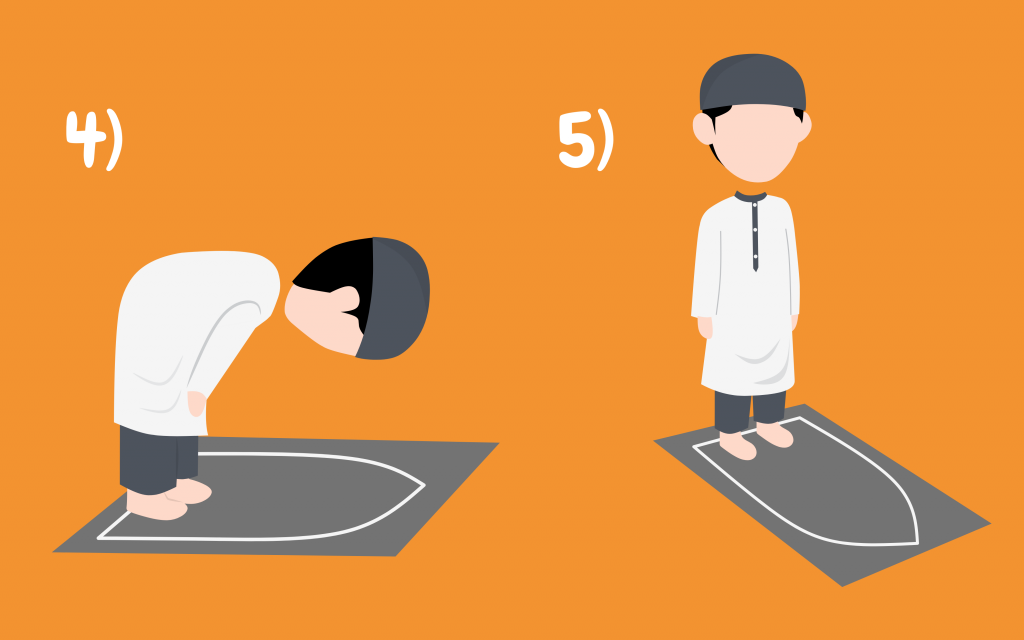
B. Next, bow down and recite ‘Allahu Akbar’ (‘Allah is the Greatest’) while laying your hands on your knees and keeping your back straight. Rest in this position, known as Ruku (bowing), and repeat ‘Subhana Rabbiy-al-‘Adheem’ at least three times. This means ‘Glory to my Lord, the Great’.
Then, when you stand completely straight again, say, ‘Sami’-Allahu liman hamidaH’ – ‘Allah heard the one who praised Him’. Then say, ‘Rabbana laKal hamd’ – “O our Lord, all praise is due to You.”
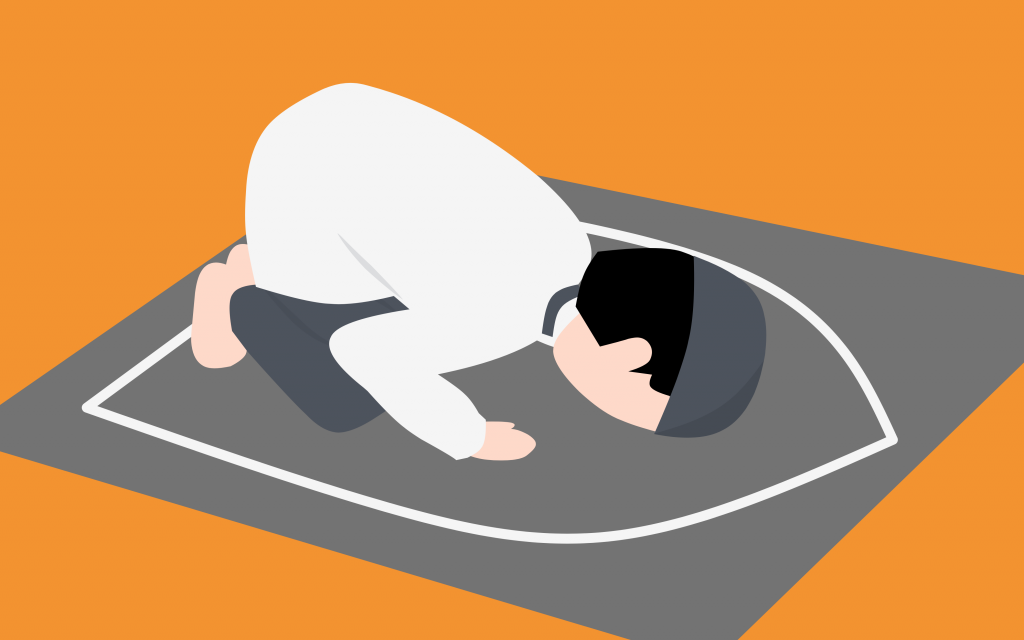
C. Say “Allahu Akbar” once again before entering Sujud, or deep prostration. Your nose, forehead, palms of both hands, knees, and toes facing forward should all touch the floor as you kneel.
Say “Subhaana Rabbiy-al-A’laa” (Glory be to my Lord, the Highest) three times at least.
D. As you say “Allahu Akbar,” sit up. Place your hands’ palms on your knees. Maintaining your right foot firmly and pointed ahead, take a seat on the flat of your left foot. Ladies should lean on their left hip while pointing their right toes on both feet.
In between prostrations we say, “Rabbighfirli” (O Allah Forgive me) three times, before going back into the second prostration.
E. Then again say “Allahu Akbar” and prostrate a second time repeating the last step.
Come up from prostration and say “Allahu Akbar”, standing all the way up. You have now completed your first Unit/Rak‘ah, of Salah.
Follow steps A to E again. (Complete another unit)
F. Then return to a sitting position as described in step D.
Recite the opening line of Tashahud while seated, ’At-tahiyyatu lillah, was-salawaatu wat-tayyibaat. As-salaamu ’alayka ayyuhan-Nabiyyu wa rahmat-Ullahi wa barakaatu. As-salaamu ’alayna, wa ’alaa ‘ibaadi-llahis saaliheen’. This means, ‘All compliments are for Allah, and prayers and goodness. Peace be upon you, O Prophet, and the mercy of Allah and His blessings. Peace be upon us and on the righteous servants of Allah’.
Next, elevate your right index finger while clasping the remaining fingers of your right hand, keeping your hands resting on your knees. Now recite “Ashhadu a laa ilaaha ill-Allahu wa ashhadu anna Muhammadan ‘abduHu wa Rasooluh,” which is the second section of the Tashahud. This statement translates to, “I bear witness that Muhammad is Allah’s servant and messenger and that there is no other god but Him.”
G. Place both of your hands back on your knees by lowering your right index finger.
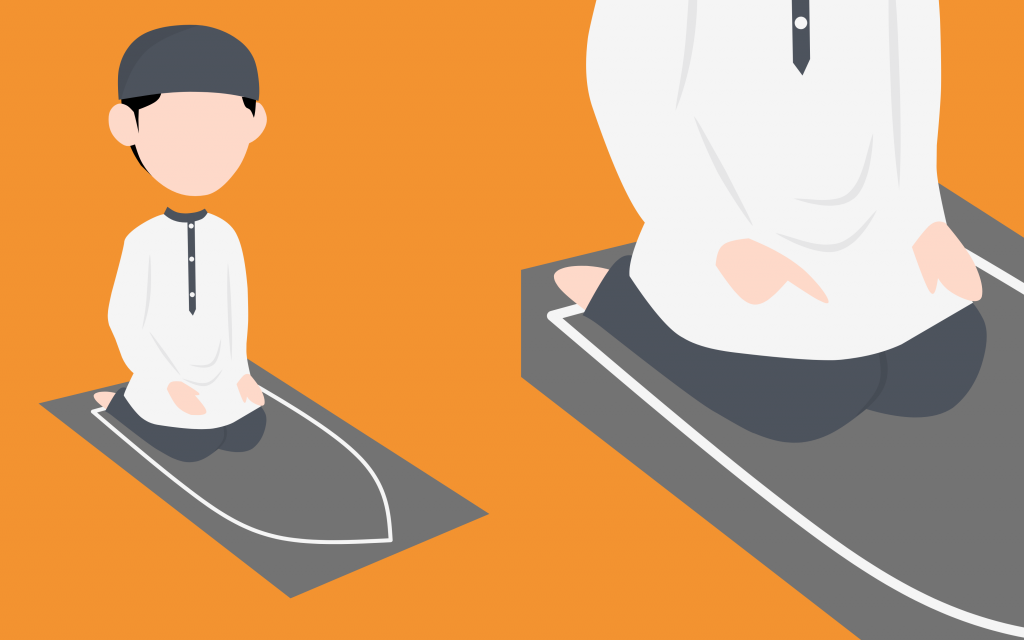
If you are praying the two Rak‘ats of the Fajr prayer, please follow steps H to I. If not, please skip to step J.
H. Remain seated and recite, ’Allahumma salli ’alaa Muhammadiw wa ’alaa aali Muhammadin, kamaa sallayta ’alaa Ibraheema wa ’alaa aali Ibraheema, innaKa Hameedum Majeed. Allahumma baarik ’alaa Muhammadiw wa ’alaa aali Muhammadin, kamaa baarakta ’alaa Ibraheema wa ‘alaa aali Ibraheema, innaKa Hameedum Majeed’. This means, ‘O Allah, send Your mercy upon Muhammad and the family of Muhammad, just as You sent mercy upon Ibrahim and the family of Ibrahim. Truly You are Praiseworthy and Glorious. O Allah, send blessings upon Muhammad and the family of Muhammad, just as You sent blessings upon Ibrahim and the family of Ibrahim. Truly You are Praiseworthy and Glorious’.
Then, it is strongly advised to perform some du’a, or prayers. “Rabbana aatina fid-dunya hasanataw wa fil-aakhirati hasantaw wa qina ‘adhaaban Naar'” is one that is both straightforward and thorough. This translates to, “O our Lord, grant us good in this life and good in the next, and keep us safe from the punishment of the Fire.”
I. With your head positioned first over your right shoulder, you finish the salah by reciting, “As-salamu ‘alaykum wa rahmat-Ullah.” Then, while looking over your left shoulder, repeat these sentences. “May peace, Allah’s mercy, and His blessings be upon you,” is what they mean.
You have finished your salah if you were praying Fajr salah.
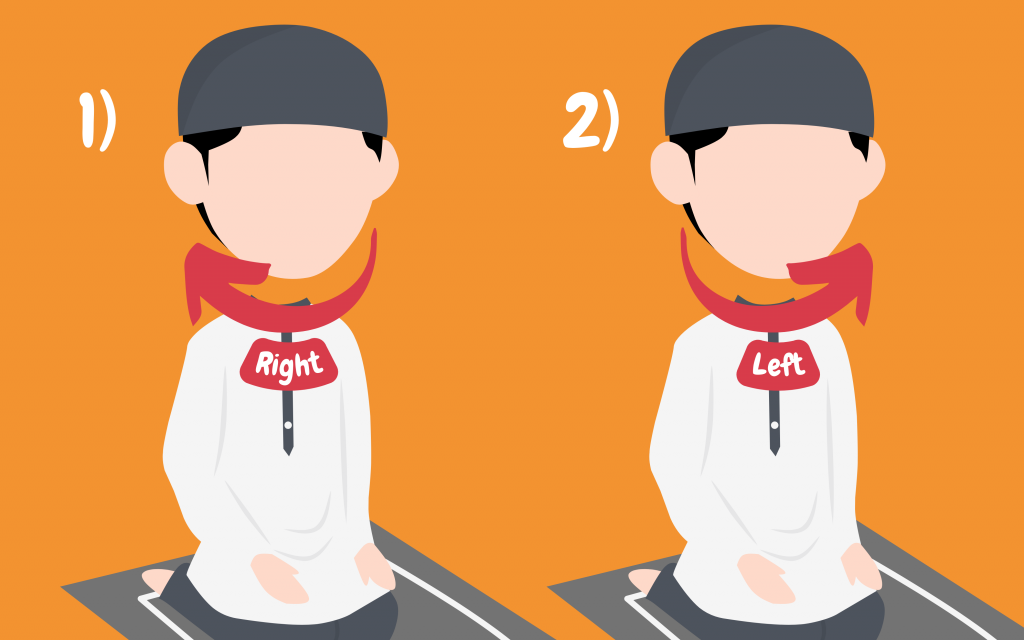
J. If you are praying Dhuhr, ‘Asr, Maghrib, or ‘Isha, skip steps H – I. Instead, you must repeat step A: ONLY recite Surah al-Fatihah whilst standing.
K. Now go through stages B – E.
L. If you are praying the three Rak’ah of Maghrib, return to the seated position and repeat steps F – G. Then repeat steps H – I. Your Maghrib prayer is now complete!
If you are praying the four Rak’ah of Dhuhr, ‘Asr, or ‘Isha, please disregard step L! Instead, repeat steps A and K.
Now go to steps F – G. Then repeat steps H – I.
Dhuhr, ‘Asr, or ‘Isha Salah is finally complete! We praise Allah for allowing us to complete our salah.
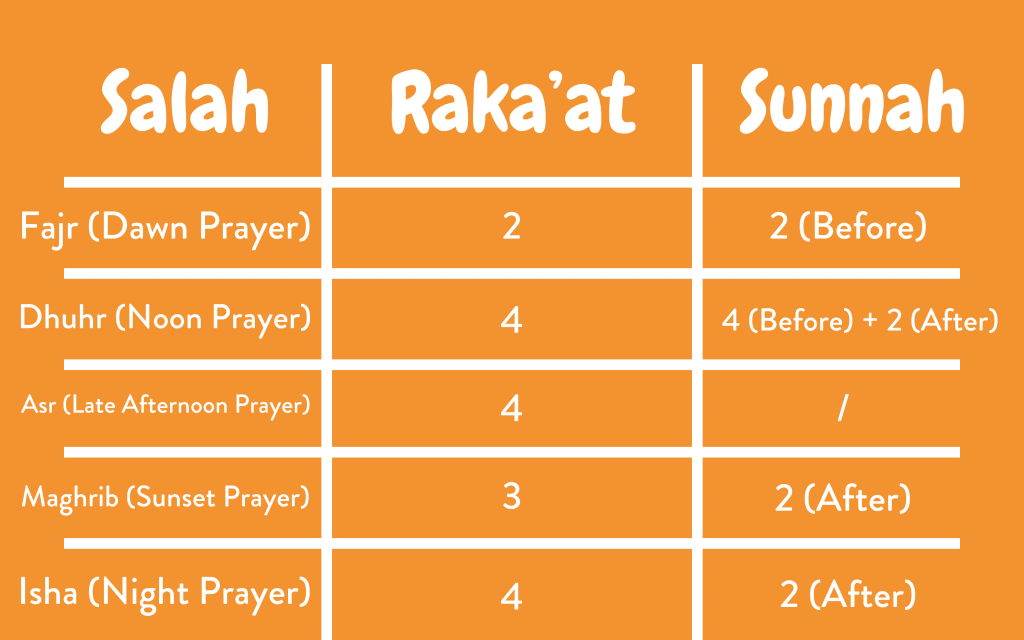
Men praying in congregation must read the whole Fajr prayer aloud. Dhuhr and Asr must be prayed in silence, under your breath. The first two Rak’ahs of Maghrib and ‘Isha should be recited aloud, while the remaining are to be read silently.


